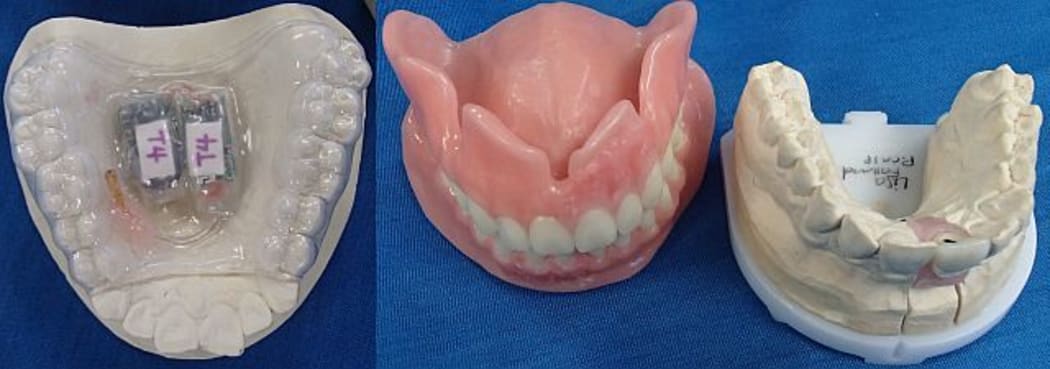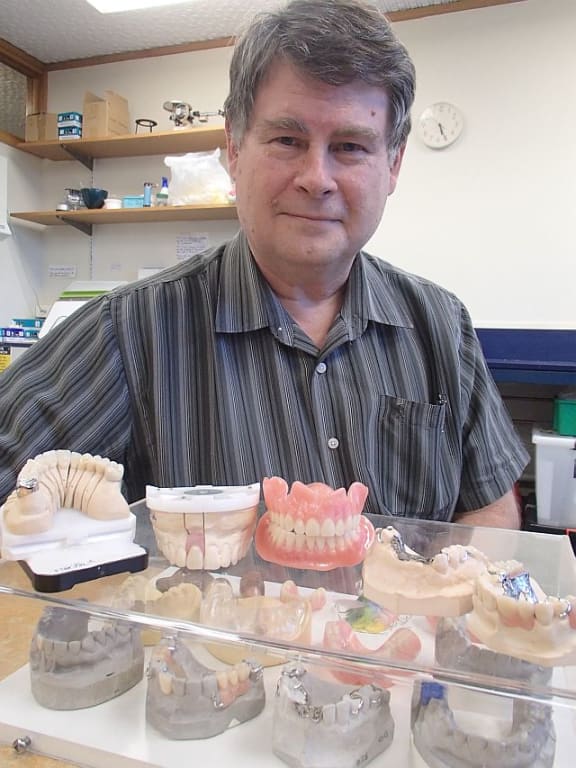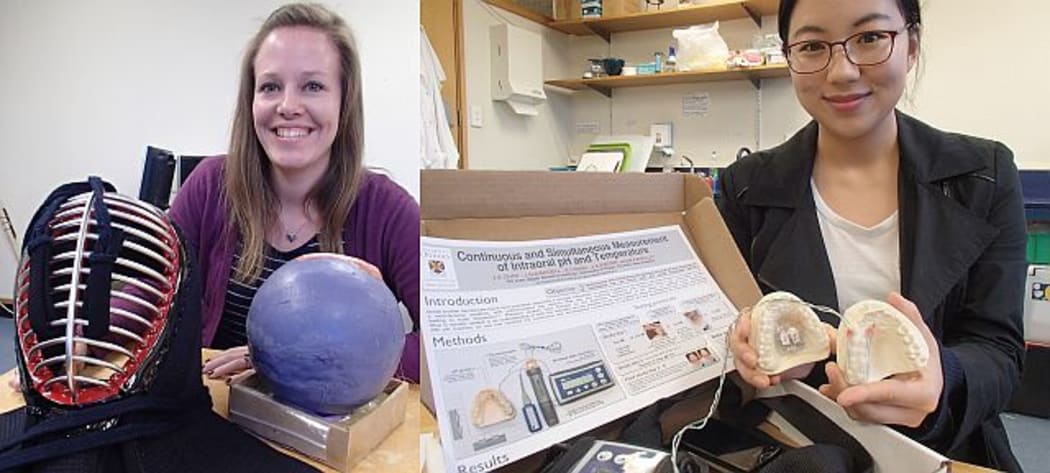By Alison Ballance
"Dental technology is the technical side of dentistry. We’re sort of the backroom guys, the oral micro-engineers who design and make things for the dentists to use to treat patients."
Neil Waddell, Faculty of Dentistry, University of Otago

The device at left is a device that has been moulded to fit one person's teeth, and it contains sensors to detect pH in the mouth over 24 hours. At right is an example of a full set of dentures and a single tooth cap, Photo: RNZ / Alison Ballance

Dental technologist Neil Waddell says that making whole or partial dentures and replacement teeth is both an art and a science. Photo: RNZ / Alison Ballance
Dentures or false teeth, bridges, tooth caps, orthodontic devices such as removable braces, ‘glass’ eyes, and prosthetic noses and fingertips. If it can be made from polymers, metals and ceramics, and it needs to look and, at least in the case of the teeth, function like the real thing, then chances are a dental technologist will be able to make it.
Dental technology is mainly about creating appliances to improve patients’ appearance, speech or ability to chew. It is taught as a three-year degree at the University of Otago, and students must have a background in chemistry, biology and physics. After training they can register as a Registered Dental Technician.
Neil Waddell, from the Faculty of Dentistry at the University of Otago says that dental technologists need to have a good understanding of the forces and chemical make-up of the human mouth.
“The forces in the mouth are very strong, so the materials we use to make the teeth have to withstand very, very high forces. And the mouth is a very harsh environment. The saliva, the enzymes there, are very corrosive,” says Neil. “And then because we eat, we masticate, we clench and our jaws move it’s a fatigue – we cyclically load. Yet at the same time it’s got to look tooth-like in appearance.”
As a result dental technologists need to understand material engineering as well as having artistic abilities to be able to sculpt and paint things such as dentures in a very realistic way.
“Dental technology is very linked to the aerospace industry,” says Neil. “The dentistry industry looks at the aerospace industry and says ‘wow, we could use these technologies and materials and techniques’ but in a dental application.”

PhD student Lisa Falland (left) is developing a skin-skull-brain model (the purple sphere) to investigate impacts and concussive brain injury. The helmet is Kendo martial art's protective gear. Fellow PhD student Joanne Choi is investigating dental erosion caused by acid in the mouth. Photo: RNZ / Alison Ballance
Neil Waddell and others from the Department of Oral Rehabilitation in the Faculty of Dentistry have worked with Crown Research Institute ESR to develop a skin-skull-brain model that was used in ballistic testing. PhD student Lisa Falland is currently working to further the use of the model to look at concussive head injuries.
“The question is how much energy would get transferred [to the brain] if you got hit on your head, and you can’t measure that on a real human,” says Lisa. “So I’ve developed this model that has a gelatin brain, a polymer resin skull, and skin made from silicon. Then there are sensors attached.”
The model has been tested so far with swords from the Japanese martial art of Kendo. “A couple of month ago you’d have seen a whole lot of students, using a Kendo sword, beating a skin-skull-brain model to measure the impacts. Once we know what the levels of energy transfer are we can then start to change as a variable the helmet design, thickness, etcetera in light of the forces going through to the brain.”
PhD student Joanne Choi has been developing a moulded device to measure intra-oral pH in the mouth over 24 hours. Acidic conditions in the mouth can lead to dental erosion of both real and artificial teeth, and is common amongst people who have dry mouths or suffer from gastric reflux.

